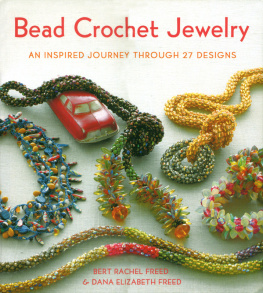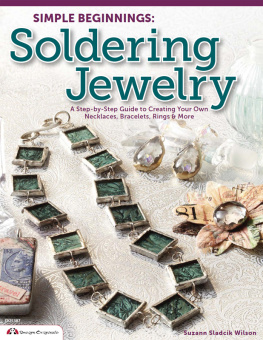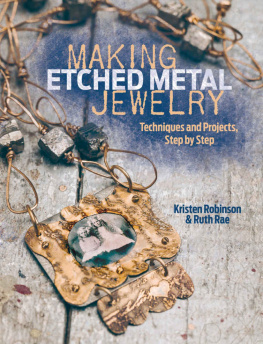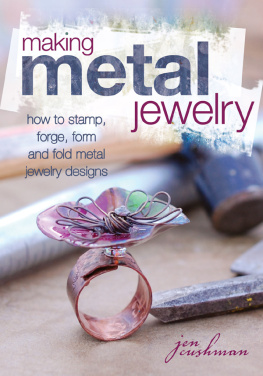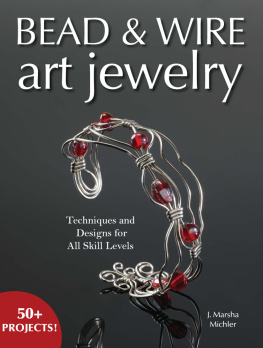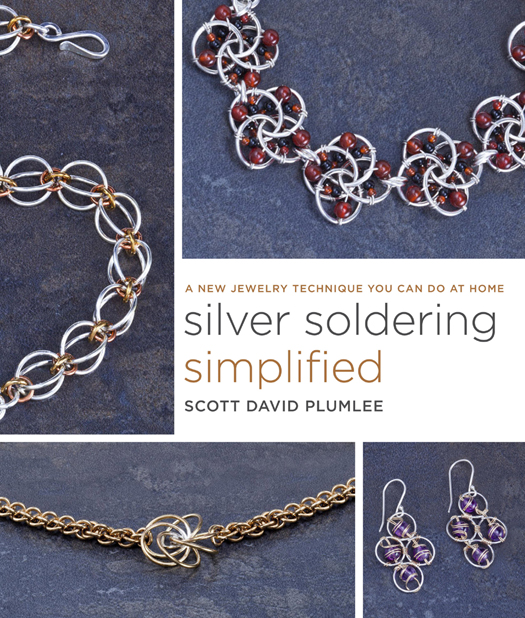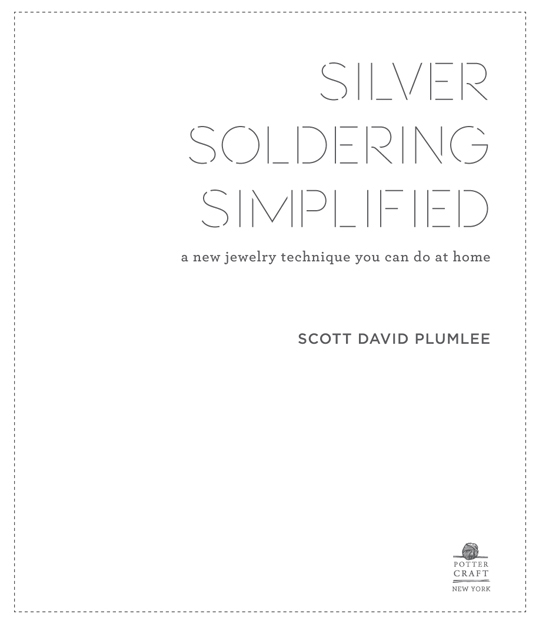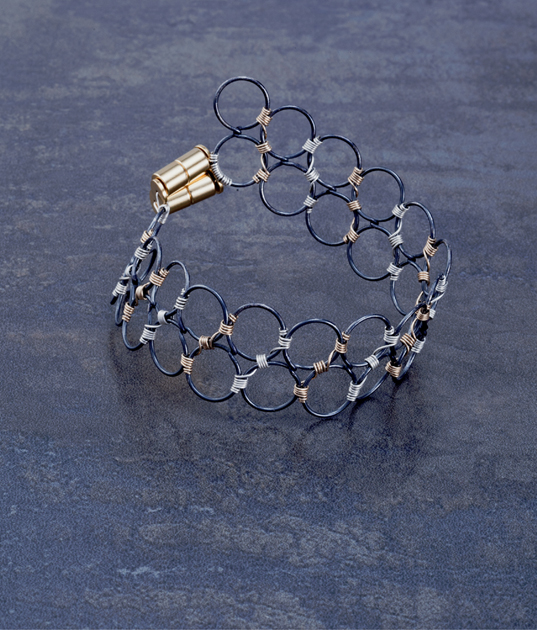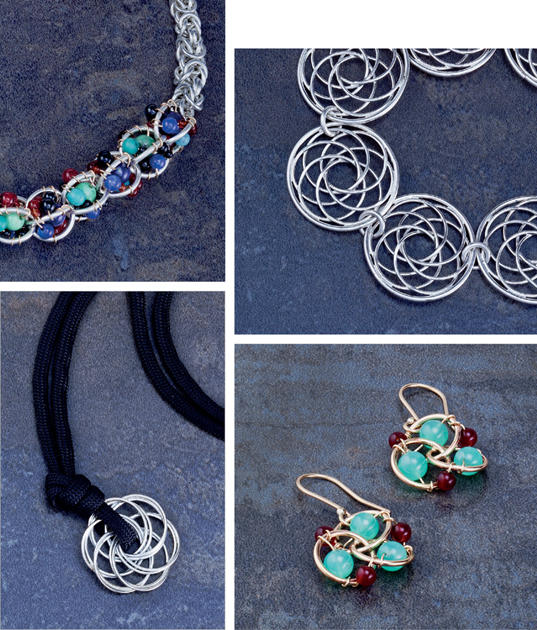Copyright 2013 Scott David Plumlee
Artwork by Scott David Plumlee, except as otherwise noted.
All rights reserved.
Published in the United States by Potter Craft, an imprint of the Crown Publishing Group, a division of Random House, Inc., New York.
www.crownpublishing.com
www.pottercraft.com
POTTER CRAFT and colophon are registered trademarks of Random House, Inc.
Library of Congress Cataloging-in-Publication Data
Plumlee, Scott David.
Silver soldering simplified / Scott David Plumlee. First edition.
pages cm
Includes index.
1. Jewelry making. 2. Silver jewelry. 3. Silver brazing. I. Title.
TT212.P556 2012
745.5942dc23
2012037109
ebook ISBN 978-0-7704-3368-0
Trade paperback ISBN 978-0-7704-3367-3
Cover design by La Tricia Watford
Cover photographs by Marcus Tullis
Photographs on following pages by Marcus Tullis:
First Edition
v3.1
I wish to dedicate this book to everyone who believed in me, especially:
My loving parents, Larry and Shirley, for their encouragement and support.
My brother Jeff; his wife, Erika; and their two boys, Isaac and Nathan, for all the smiles.
All the students who took workshops and encouraged me to write this book series.
All the patrons who purchased my jewelry art and invested in my business.
All the teaching institutions that invited me to lead jewelry-making workshops.
All the fine art retail galleries that retail my jewelry and provide representation.
Betty Wong and all the fine folks at Potter Craft, Crown, and Random House.
Martha Moran, for your editorial skills to organize creative ideas into teachable concepts.
Sophie Lenoir, for the rooftop photo shoot to capture my face in front of Taos Mountain.
Spider, for making the best jump rings in the universe and for all the good advice.
Over the past decade of leading workshops and authoring books, I have utilized my inner childs curiosity to play with metal wire and gemstone beads with reckless abandonment, to explore new plateaus of soldered metal design and wire-woven bead embellishment.
I feel blessed with the opportunity to bring these techniques and designs to you, the reader, and I hope you enjoy this new chapter of your jewelry-making adventure. Ultimately, my wish for you is to create your own amazing jewelry designs, ones I would have never imagined.
INTRODUCTION
With four successful (and still in print!) jewelry-making books under my belt, I was ready to move beyond cold-connected chain and bead jewelry techniques and explore new territories of design and expertise for my next one. Luckily for me, this desire coincided with a few revolutionary advances in silver soldering technology. These advances make it not only simple, but more important, safe to solder silver in your home studio or workspace. The development of the handheld butane torch, Argentium silver solder paste in a syringe, and the Solderite board working surface all serve to greatly simplify the soldering process, making it more user-friendly and less frustrating, so you get better results with a repeatable consistency. This new ability to safely solder at home opens up a world of additional creative opportunities for your silver jewelry-making repertoire.
EXPLORING THE BOOK
In this book, well create a variety of geometric shapes, both simple and complex, from securely soldered jump-ring frames, many of which are embellished with wire-woven gemstone patterns.
Well start with the basics about the wires and beads youll use for the jewelry projects, followed by the soldering tools and techniques youll need to make them. There are illustrated step-by-step tutorials on paste soldering techniques, how to solve common soldering problems, proper use of hand tools, making jump rings, assembling the chain patterns featured in the projects, and creating your own head pins and earring backs. Ill also show you how to construct four of my favorite jewelry clasp designs, two of which have a soldered assembly.
In the Peace Symbol chapter, well first review the basics of wire wrapping on a frame, then put theory to practice by hand-wrapping a single wire, a double wire, and then a triple wire into the iconic Peace Symbol formation within a frame. The pieces are then securely soldered and featured individually as a necklace centerpiece, repeated into a bracelet length, and graduated in size into shoulder-dusting earrings.
The Globe chapter places two rings at right angles, each set into the others gapped joint, and securely soldered into a Globe formation. Multiple Globes are connected with jump rings into a bracelet or interlocked in a repeating pattern and wire-wrapped with a variety of gemstone beads to create matching earrings and necklace.
The Propeller chapter spirals multiple rings, pulled outward by pins set into holes drilled into the Solderite board, and then soldered into gravity-defying three-, four-, and six-ring Propeller formations. Each frame is embellished with wire-woven bead settings to create several earring designs, repeated into three different bracelet lengths, and featured as a necklace centerpiece.
The Dharma Wheel chapter spirals six 19-gauge rings that are soldered and then flattened to reveal a seemingly endless repeating oval pattern within the rings, which is turned into earrings, and also encased inside a 16-gauge frame to be combined into a bracelet length. The two Dharma Wheel pendants each spiral twelve rings that are soldered, flattened, forged, and then suspended with braided parachute cord.
The Figure Eight chapter twists a soldered-wire oval between two mandrels, rotating it 360 degrees, turning the oval into a strengthened Figure Eight frame that is then wire-woven with a mirrored beading pattern into earrings and a matching bracelet. Multiple frames are then spiral-wrapped together, side by side, into another pair of earrings and a bracelet with a magnetic clasp.
All of these unique designs and many more are waiting inside for you to explore. I invite you to choose your own adventure throughout this book: Jump around from chapter to chapter trying different techniques to find the hands-on creation process that you enjoy most. Above all else, I hope you discover your hidden talents, enjoy your craft time, smile with a completed project, and bask in the compliments from your friends.
DIFFICULTY LEVELS FOR PROJECTS
Different projects in this book require different skill levels and experience, so Ive rated each project by one of four difficulty levels: Beginner, Intermediate, Advanced, and Expert.


